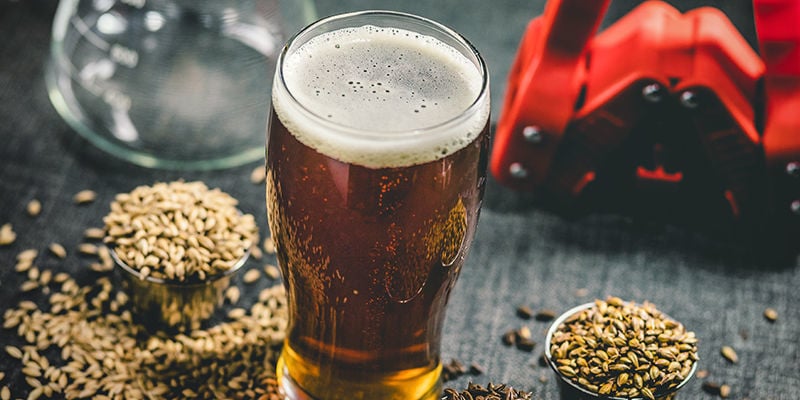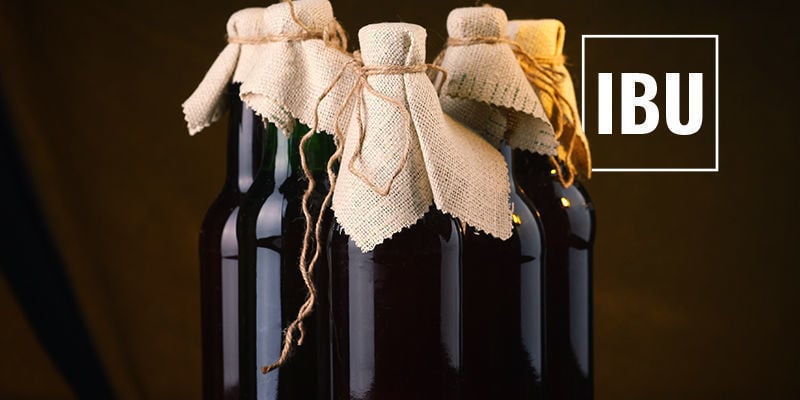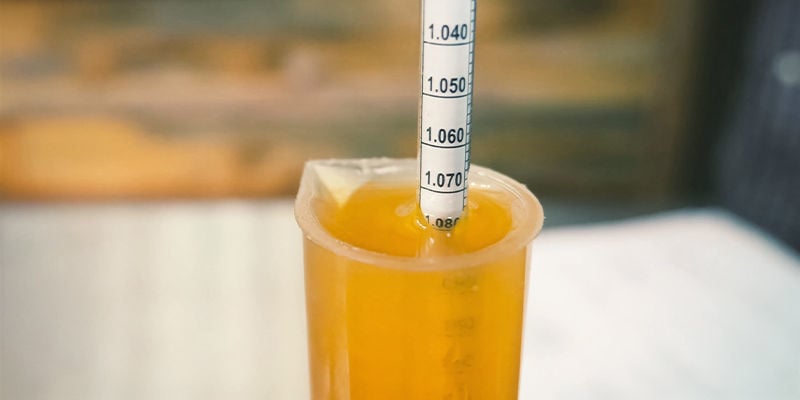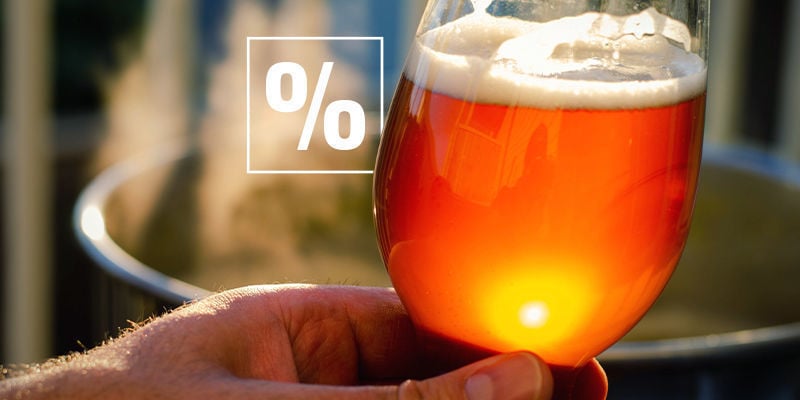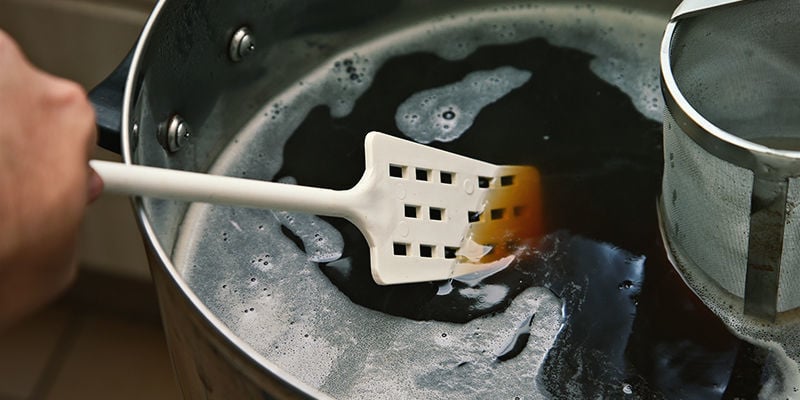What Are IBU And EBU In Beer?
The experience of brewing your own beer can be a daunting one. The complexity of the process culminates in that all important question: How do I judge the quality? Understanding IBU and EBU can help you stay on track when chasing the perfect brew.
Beer, often considered to be the stereotypical drink of the older man, has seen a real resurgence in recent years. Far from the dimly lit corners of the local pub, beer is now enjoyed as more of a trendy drink in younger circles. With this comes a myriad of abbreviations and measurements thrown at consumers in an effort to entice them. Understanding these abbreviations can help you make informed decisions when buying your next brew.
True beer aficionados will be looking to take this one step further, though. The rise of beer has also increased the possibilities for brewing one’s own. So, if homebrewing sounds like your kind of thing, now is the time to get started. Imagine the scenario; you have a freshly brewed batch of your very own beer, but no way of gauging the quality of your handy work.
WHAT MAKES A GOOD HOMEBREW?
The same abbreviations and buzzwords that are used by large-scale brewers can also be used to judge different aspects of your home-brewed beer. It is important to note that there isn’t (and never will be) an all-encompassing measure of the quality of a beer. The enjoyment of beer is subjective, and the palate of one consumer will vary from the next.
Beer is measured in a multitude of ways. Colour, aroma, strength, and even bitterness are all ways of judging a beer. Understanding how to measure them and what you are aiming for will help on your journey to crafting that perfect homebrew. One of those measurements of quality is bitterness. In walks IBU or International Bitterness Units. Achieving a consistent IBU when brewing lets you know that your process is under control.
WHAT IS IBU?
So, is a higher IBU better than a lower? Unfortunately, the measurement of IBU and its effectiveness as a benchmark relies solely on context.
If we took a beer that had an IBU of 50, naturally we would assume that it was really bitter. If that beer was light and lower in malt flavour, it would indeed taste incredibly bitter. Apply the same IBU to a dark stout and actually, the bitterness would be barely noticeable.
The easiest way to describe IBU is by thinking of it in a different context. Take your favourite TV show; you will have certain members of the cast that you like more than others. Alongside that, the members of the cast that you prefer will also have better on-screen chemistry with some of the other characters. Not everyone will get along.
IBU is no different. You may prefer a beer with a bitter taste, or a higher IBU in this case. However, if that bitterness does not blend well with the other aspects of the beer, then it can be too overpowering. This can ruin the beer completely. The IBU of the beer depends on the acquired taste of the consumer and the brewer's ability to match it with the other qualities of the beer.
Interestingly, the IBU of a beer can have different consequences depending on where you live. For example, in Germany, selling pilsner beer with an IBU lower than 20 constitutes as fraud. Furthermore, if you wanted to make a beer with an IBU lower than 4 in Australia, you legally wouldn't be allowed to even call it beer. Typical examples of IBUs are as follows:
• American Lager: 8-15 IBU
• Blonde Ale: 15-28 IBU
• European Amber Lager: 18-30 IBU
• English IPA: 40-60 IBU
• Russian Imperial Stout: 50-90 IBU
HOW IS EBU ANY DIFFERENT FROM IBU?
Having thrown IBU at you, what is EBU? Playing devil's advocate, EBU (European Bitterness Units) is virtually the same as IBU; both are used to measure the same thing. The difference, if any, is the scientific process of measurement. When calculating IBU values, the beer sample is handled in a pipette dipped in octanol to eliminate foam. For EBU, it isn't dipped in octanol.
HOW TO MEASURE IBU
Outside of the lab, there is a general equation homebrewers can use to work out a rough IBU. The formula is as follows:
IBU = W × A% × U × 10 ÷ V
W = Weight in grams
A% = Alpha Acid %
U = Utilisation
V = Volume in litres
If you look at that and scratch your head, allow us to break down the equation into something a little more manageable.
WEIGHT
This is the weight of hops used during the brewing process. Be sure to include the hops used throughout all stages. This will include the ones you add for flavour and aroma.
ALPHA ACID
Alpha acids contribute to bitterness during the boiling phase. The alpha acid is predetermined by the variety of hop. It is worth noting that the alpha acid of your chosen hop can vary depending on the weather, harvest conditions, and storage.
PERCENTAGE OF UTILISATION
The percentage of utilisation or hop utilisation increases based on boil time. 5% hop utilisation would equate to up to 5 minutes of boil time, and 31% for 60+ minutes. These are all rough calculations, as the method of brewing and the equipment used can be determining factors in the utilisation percentage.
You will need to apply the formula to each amount of hops you add; in this case, the hops used for boiling, flavour, and aroma. With the three values calculated, adding them together will give you the beer’s total IBU. This is where modern day methods reign supreme. The internet is a wonderful place and as such, many sites offer complete calculators for working out the IBU, both in metric and imperial format. Input the data required, and they will work out the predicted IBU of your homebrew for you.
IBU IS A RELATIVE TERM
We know that IBU is one part of the intricate puzzle that forms a good tasting beer. On its own, it isn't really a measure of anything. Bitterness, combined with the other elements of beer, helps you understand how well your brew is balanced. Similar to the example we provided before, if the beer is lower in malt flavour, then the higher the IBU, the greater the imbalance.
To work this out, we can use the BU:GU (Bitterness Units:Gravity Units) ratio. Initially introduced by Ray Daniels, this method allows us to work out the bitterness relative to malt sweetness. In this hypothetical scenario, we can assume the IBU of our beer is 25. Next, divide the IBU by the original gravity of the beer. Original gravity (OG) is a measure of the fermentable and unfermentable substances in beer wort before fermentation. If our beer has an OG of 1090 (the first two digits are dropped) and the IBU was 25, then you would be left with a score of 0.2.
On the BU:GU scale, “1” would be a beer with a very bitter taste and “0.1” would be a beer with very low bitterness. Our scenario would result in a beer with very low bitterness relative to the sweetness of the malt. All these calculations form part of a complex beast; a beast that, when perfected, will allow you to create beers perfectly suited to your preferences. Now, the next time a beer buzzword gets thrown at you, you’ll be able to approach it with confidence and greater understanding.
-
 6 min
6 December 2021
10 Drinks To Enjoy When Stoned
An underrated partner during a smoking session is your beverage of choice. Whether you choose to double the buzz with an alcoholic beverage or refresh yourself with something cold and fruity, here...
6 min
6 December 2021
10 Drinks To Enjoy When Stoned
An underrated partner during a smoking session is your beverage of choice. Whether you choose to double the buzz with an alcoholic beverage or refresh yourself with something cold and fruity, here...
-
 4 min
23 May 2018
The Top 10 Facts About Homebrewing
If you enjoy brewing your own beer at home, then you will enjoy these top 10 facts about beer and homebrewing. Beer has been around for at least 7,000 years. Brewing beer was an intrinsic part of...
4 min
23 May 2018
The Top 10 Facts About Homebrewing
If you enjoy brewing your own beer at home, then you will enjoy these top 10 facts about beer and homebrewing. Beer has been around for at least 7,000 years. Brewing beer was an intrinsic part of...
-
 2 min
2 February 2017
How To Make Absinthe At Home
For anyone interested in trying absinthe, why not opt for the Absinthe Starter Kit? This kit provides the opportunity to make your own absinthe at home, without the risk of bringing about another...
2 min
2 February 2017
How To Make Absinthe At Home
For anyone interested in trying absinthe, why not opt for the Absinthe Starter Kit? This kit provides the opportunity to make your own absinthe at home, without the risk of bringing about another...
-
 3 min
10 April 2014
How To Make Cannabis Beer
As you might already know, cannabis and beer go well together. But there‘s more to it than just taste - hops and cannabis are more closely related than you may think.
3 min
10 April 2014
How To Make Cannabis Beer
As you might already know, cannabis and beer go well together. But there‘s more to it than just taste - hops and cannabis are more closely related than you may think.













 United States
United States


